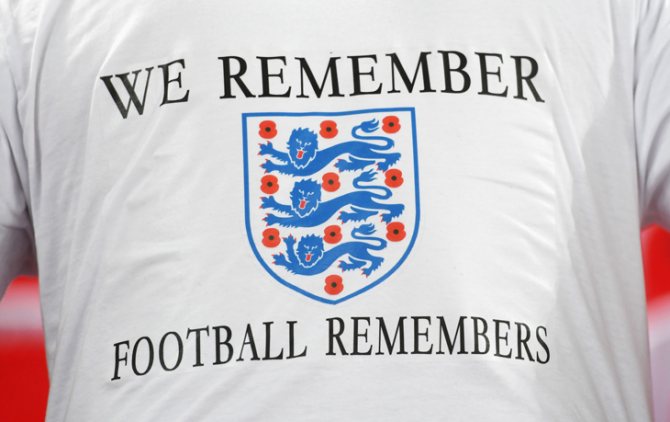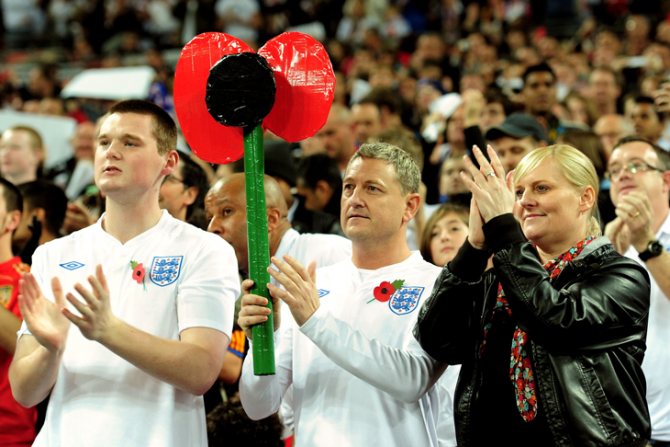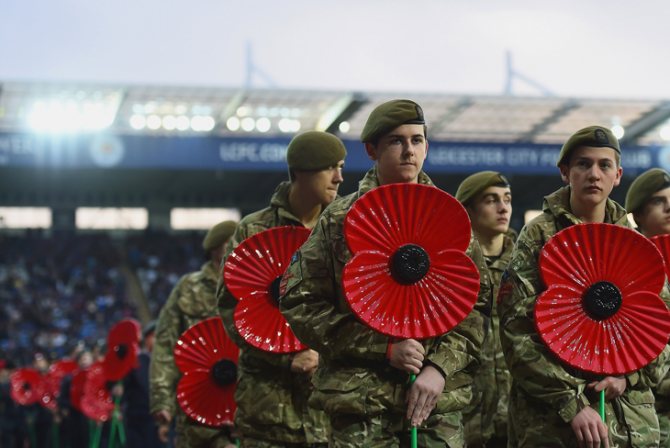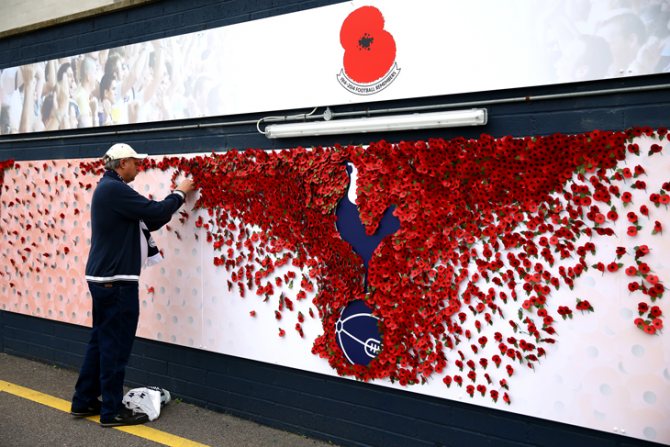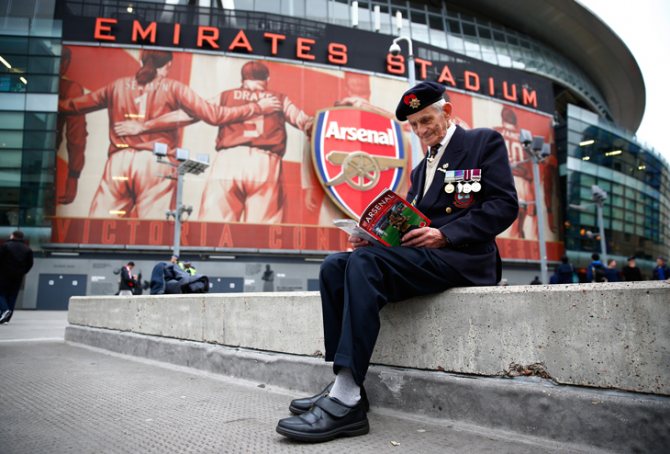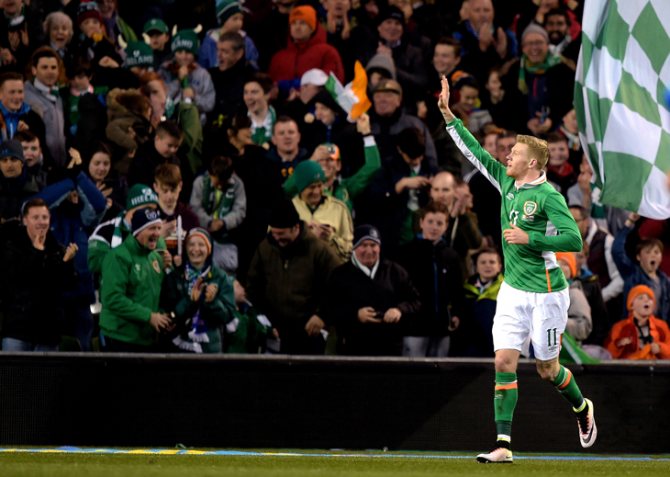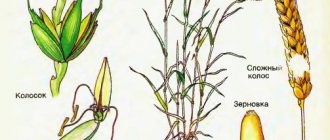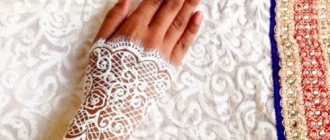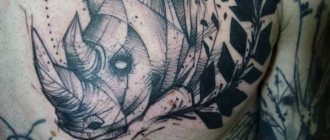Poppies - bright flowers that leave no one indifferent. Their beauty captures the eye. Probably not everyone knows that this flower in many peoples has a certain meaning. Back in Ancient Greece, they were considered the flowers of the gods. The Slavs treated them as flowers of angels. In ancient China, the poppy flower, like peonies, was revered for attracting love and improving relationships between relatives. The ancient Chinese teachings of feng shui also attaches great importance to these flowers.
Poppies according to feng shui, their meaning and properties
Poppies according to Feng Shui are considered magical plants. With their bright colors, they attract positive energy and enhance it. According to doctrine, flowers help a person to succeed in business, his business. If you contemplate on them in solitude, it promotes making the right decision, leads a person to a calm, peaceful state.
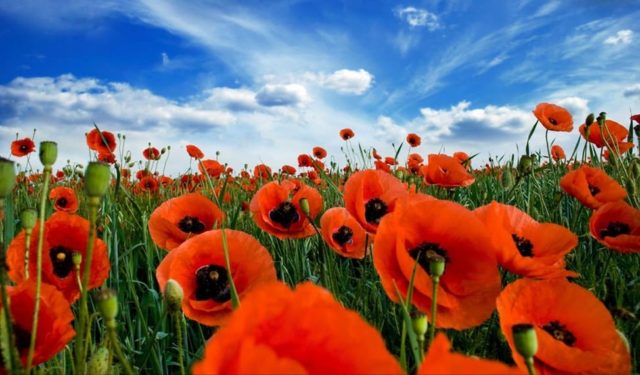
But the main value of the flower is a beneficial effect on the sphere of love and relationships. They, like a magnet, attract true love to a person. They help to see and understand the true qualities of their chosen one.
Poppies are able to influence their energy not only in the creation and formation of love relationships. They help not to make mistakes in family life. Find the right way out of difficult situations. By their energy, they increase the sense of responsibility, the sense of leadership. And it gives us the determination to take responsibility. Leads to better relations, to mutual understanding, harmony.
Poppies according to Feng Shui harmonize not only love relationships, but also within the family. When there are quarrels between children and parents, siblings, grandmothers and grandchildren, they contribute to reconciliation.
Another amazing property of it is to attract success in any case. It especially favors those who are engaged in their business.
In feng shui, symbolism is important. That is why both living plants and images are used to bring about qualitative changes in one's life.
If we use living plants, we should know that they are cut no more than two days. But during this time, their strong energy can affect the quality of human life.
If there is a possibility, it is best to grow these flowers in a flowerbed near the house. This will especially help businessmen, as well as business people.
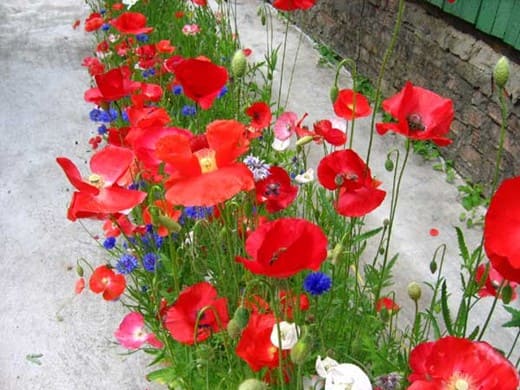

Flowering plants in the bed give us a constant feeding of beneficial, strong energy.
If you put live plants near a bed, it will lead to a quick birth of a child. It is not without reason that Demeter, goddess of fertility, is depicted with a poppy in her hand.
Healing properties
The healing properties of the poppy have been known since ancient times. Juice and grains of the flower were used to enable a person to get rid of pain for a while.
Nowadays, this flower is used to create medicinal preparations. The plant contains useful proteins, vitamins, fats and trace elements.
The importance of the poppy for medicine is enormous, as it is used to treat diseases such as:
- cough;
- insomnia;
- stomach;
- heart;
- kidneys.
Poppy-based medicines have the following effects:
- relieve pain;
- eliminate cramps, spasms;
- treat some cancers;
- reduce inflammation;
- Strengthen the body.
Unfortunately, a unique plant began to be used as a narcotic substance. In many countries, its cultivation has been banned.
What does a painting of poppy flowers mean according to feng shui?
If a painting that shows many poppies, many bright colors, to place in the apartment, it will attract great passion in the life of the owners.
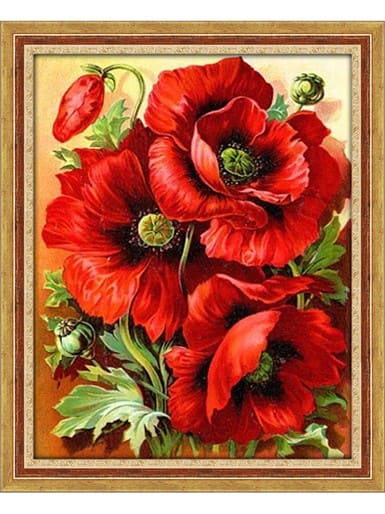

A painting painted in calm colors will bring tranquility, peace to the owners. It will also promote mutual understanding and harmony in the family.
If the family relations need to be activated, to add a little activity and fire, then feel free to place a picture with an abundance of red. Such a picture enhances the energy of Qi, which brings bright changes in mutual understanding.
Energy of creativity and novelty will attract a flower, which in the picture will be painted alone among the dense green leaves. Such a picture can be placed in the creativity sector, located in the western direction.
Magical properties
In ancient times, it was believed that spirits lived in poppies. The flower was used for magical rituals, witchcraft, fortune-telling. Poppies were amulets against the evil eye and evil spirits. The flower's grains were scattered during wedding ceremonies, in places where the woman and child were in childbirth. Beans were scattered around the house to keep the devil's powers from getting close to the owners.
A woman who couldn't get pregnant for some years used to put flower petals in the attic. They lay there for as many days as the couple could not have children. Then the petals were burned.
With the help of flower grains one made a incantation for wealth and income.


Poppies in the interior
Places in the house for poppies
Where is better to place? To attract new love, place poppies or images should be in the sector of love and relationships. For an apartment, it is the south-west sector or south-west of the room.


If it is necessary to harmonize relations between spouses, then the picture or flowers can be placed in the bedroom. They will help to calm down and make the right decision with their energy.
- If the poppies are placed in the east, the relationship between the household will improve. Also, a picture or a bouquet can be placed in the living room, where the family gathers most often.
- For success in business, it is desirable to place poppies in the north or in the workplace.
- In the West, in the creative sector, flowers will attract success in all new endeavors.
Poppies can be placed in all areas of the apartment or house. Where they will be placed, that area of life will receive an influx of additional energy. But wherever poppies stand, they can attract a beneficial positive energy in family relationships.
Choosing a planting location and care
Poppies love sun, so plant them in an open, sunny area. Plant the seeds in loose, sandy loam soil. After five years, it is recommended to transplant the flowers to another location. Since the roots proliferate strongly, they are divided for transplanting.
The plant does not require special care. Water it so that the moisture does not stagnate. Roots rot from overwatering. Diseases, pests rarely damage the plant. If the flower has grown tall, fasten it near a support so that it does not break.
Poppies bloom very quickly, then cut the dried above-ground part of the flower.
Features of female and male tattoos
Earlier on tattoos in the form of poppies the choice stopped only girls. It was believed that such a drawing looks excessively delicate. Nowadays the image of flowers gained popularity among men.
For the stronger sex tattoo has the following meanings:
- Pleasant solitude
- Valor and bravery
- Eternal youth
- Courage and strength
Female tattoos have a slightly different meaning:
- Vitality
- Tenderness
- Beauty
- Humility
- Fertility
Superstitious ladies often make tattoos in the form of poppies to create protection against the evil eye. There is also a belief that such a tattoo helps girls get pregnant.
Why a red poppy is not our symbol?
While the impression of the May holidays has not cooled down yet, we should dwell on one ambiguous fact. It's no secret that this year a movement against the St. George Ribbon as a symbol of victory of the Soviet people intensified in many countries. And, accordingly, the propaganda of the red poppy, a sign of sorrow and remembrance that is new to some post-Soviet countries, has also become more active. No one did anything special to explain this, which resulted in another round of media confrontations.
In Ukraine we can understand - for years there was a recurring need to replace the classic symbol of the Soviet Victory with something. There was nothing to replace it with. It is understandable - the Victory was directly associated with St. George the Victorious. But how can you replace a saint? And who can replace a saint?
This year, on May 9, the Ukrainian authorities hinted very strongly that no one should use this symbol on Victory Day. But, neither a law prohibiting the wearing of the ribbon nor a law officially approving any new symbol in Ukraine has been passed.
Only just coming to grips with this, after May 9 itself, a bill is being prepared by the deputy Anton Gerashchenko to ban the wearing of St. George's ribbons.
It is clear that as a result of the military conflict in Ukraine, the opposing sides use their particular symbols. And everyone knows how painfully some Ukrainian radicals react to many symbols of Novorossia. The St. George Ribbon is no exception.
Suicide sign.
This hole of hatred, at least for Victory Day, simply had to be replaced with something. So they replaced it with red poppies. They were motivated by the fact that in all civilized Europe it is a symbol of remembrance of the victims of World War II.
But this is an outright lie. The red poppy as a symbol of remembrance of war victims has nothing to do with May 8 or 9. But the frenzied hatred that the promotion of the red poppy symbol aroused in the networks and some media is not quite correct either. Even though the interpretation, in terms of design, of this symbol in the Ukrainian version is unfortunate and even disgusting. As many have noted, it is literally a bullet hole, filled with blood. This is not rejected by the so-called designers from Kharkov themselves. You should know the names of these "heroes". They are Sergei Mishakin and Tatiana Borzunova.
"This is not a symbol of Victory at all, but a sign of memory of those who died during the Great Patriotic War," Sergey Mishakin explains the essence of his creation. - And since in Europe the poppy flower has long been a symbol of remembrance of the fallen, my co-author Tanya Borzunova and I decided to take it as a basis and create our sign - red circles superimposed on each other and a black dot in the middle.
Just think about it - they are writing that created their sign, ignoring the symbol that already exists in Europe and admitted that the poppy - a sign of memory of the fallen "during World War II. Sergei Mishakin, claiming to be a designer, did not even bother to find out the history of the symbol. The story with the "creation" of the new Ukrainian symbol is even more amusing. It was done by a person who has nothing to do with the country's leadership. Zurab Alasania, director of the National TV and Radio Company of Ukraine - of course, a Georgian. Arsen Avakov's close friend. Alasania approached his Kharkiv friend "designer" Mishakin and suggested that something be done as soon as possible by May 8-9. That is, all three of us are from Kharkov - Avakov, Alasania (who lived in Kharkov) and Mishakin and his colleague.
Here's what Alasania himself said about this: "The St. George's ribbon compromised itself irrevocably in recent months, we needed something symbolic, which would symbolize not a holidayWe needed something symbolic, not a holiday, which war cannot be by definition, but memory and sorrow," said Alasania. - Sergey found this symbol quickly, without even stuttering about paying for it. He gave it to me and the National Channel. The Institute of National Remembrance got it too. If it sees fit, it will be used.
Look, Zurab - war is really not a cause for joy. Victory, on the other hand, is a cause for joy and celebration. But, let's leave Alasania's conclusion about the Victory sign behind, let's better concentrate on him himself. There is an episode in his life - an unsuccessful attempt to enlist in the French Legion. This legion is famous for the fact that people of dubious past and present can find shelter in it. There is even a tradition in this legion of not asking the names of recruits who wish to enlist. Now, however, a person is "screened" for several days, isolated from the outside world. Nothing (not even possible crimes) is taken into account, except for cases of search by Interpol. If the screening goes well and the physical data meets the requirements, then the person is accepted into the legion and given new personal information, the name and even the names of his relatives are new. In essence, it is a legalized gathering of refugees from the law. Read the conditions of service in the Legion and everything will become clear to you. So Alasania only stayed for a short time in the inspection - he joined in 1996 and left the same year. History is silent as to why. There is only one contradictory phrase on Wikipedia. "In 1996 he went abroad again - under contract with the French Foreign Legion, but the contract was not concluded." Did you understand something? What do you mean, he went abroad under contract, but did not conclude a contract? And we should dig it out - who is in charge of Channel One Broadcasting in Ukraine today? What Zurab himself says about the Legion: "I've seen guys who have been serving there for a long time. A mountain of muscles, the whole body with tattoos and zero in the head. I saw what awaited me, and I had to decide if I wanted to become one. I realized I wasn't." Then why does he say the following: "After the Soviet Army, I went to their canteen for the first time, saw fried asparagus wrapped in ham, a bottle of wine for six, and freaked out. But that was nothing. The main difference is you don't have to think about anything. They think for you. That's when I needed it.". What Georgian Alasania, with $150 in his pocket, needed in the French Legion - to hide, to change his name or something else - let the relevant authorities investigate, because he himself wrote nothing concrete in his scanty essays about that period.
This is the kind of Alasania with an obscure past who encouraged his friend to create this bloody symbol with a bullet hole instead of a St. George ribbon.
Another cynical fact is striking in this story. Alasania, Mishakin and Borzunova think they have found just such an image. What, pray tell, should they have been looking for? The poppy flower has been in the associative row of symbols for a hundred years. So it was necessary to plagiarize the flower, transforming it into some kind of ritual murder sign, which people have to put on themselves? On the heart area? No one gave a right for such a creepy interpretation when it is a flower and not a bullet hole that has been used for 100 years?
The Real Story
Officially, all over the world and in the same civilized Europe, the red poppy is a symbol of Armistice Day, which is celebrated not on May 8, but on November 11, and most extensively in London. Because it is in London that the oldest factory or even a factory for the manufacture of paraphernalia - artificial red poppies, wreaths and crosses - is located. It is with grave crosses, not Victory over Fascism, that the symbolism of the red flower is connected. And it is not called a red poppy by those who manufacture and buy it, but a blood poppy or a flower of memory.
Why November 11 - because it was on that day in the French region of Picardy, an agreement to end hostilities between the Entente and Germany was signed. Hence the name - exactly Armistice Day, not the day of reconciliation. Armistice as one of the actual results of any military conflict. The other result of the end of a war, as you know, is the victory of one of the sides. By the way - to the great victory over fascism both the poppy and the armistice of a century ago, and the autumn date itself, even more irrelevant.
For this reason, "Armistice Day" has been celebrated for the past 100 years in Western countries - France, Belgium, Canada, Great Britain, and then in the United States and Australia. And it was established as an official holiday by King George V of Great Britain back in 1919.
However, it is understandable that the popularity of the Red Poppies Day in England. During the First World War the British lost not a full million people - 888,246.
This story was developed during World War I. According to the observation of the Canadian military doctor, John McCaray, who witnessed the bloodiest battles in Flanders, not far from Ypres (Belgium) in 1915 (at one of which the Germans used the first chemical attack) in the spring, wild poppies-samosas bloomed very abundantly on the battlefield and on some burial sites. Not surprisingly, the sight of them swaying in the wind, among the grave crosses, evoked comparisons with the sprouted blood drops of the dead, as if in memory of them. Recall that it was then that Germany on one side participated in these battles. On the other side were England, France, and Belgium. The countries of Eastern Europe and, moreover, the troops of the Russian Empire (together with the Ukrainian ethnos, among others) did not participate in them. According to rough estimates on the part of the Entente (mainly the French and the British) about 250,000 soldiers were killed in these Flanders fields near Ypres. Not surprisingly, in wartime conditions, many were left unburied. In the aftermath, some were able to be buried - some were not. In all, there are at least a hundred and forty war cemeteries and memorials around the city of Ypres!!!!
Hence such a touching poem by a Canadian war doctor:
In Flanders' war-torn fields, In the gloomy crosses that stand in rows, In the places where our ashes have recently been buried...
This poetic ballad has been translated into many languages and resonated with all those who lost loved ones in those battles. They enthusiastically embraced the new symbol of remembrance offered by the American Mona Michelle. Sometimes, in American parlance, she is called Mona Michael. But it wasn't so much the poppy symbol she proposed. She was looking for a way to support crippled disabled veterans of that war. So she suggested that like-minded people make artificial poppies out of fabric, sell them, and use the proceeds to support veterans. Of course - poppies had to be popularized. That's why Mona vowed to always wear an artificial red poppy on her clothing. She made the poppy a fashionable charity trend. Hence the tradition of celebrating November 11 not only as a day of remembrance and armistice, but also as a day of charity for war veterans, collecting donations, helping lonely veterans, providing medicines and other necessities.
And what about in Ukraine? By detaching the red poppy from the legal date of November 11 and tying it to May 8-9, advising them to forget about the St. George ribbons, what kind of charity are the authorities doing for retired veterans? They are imposing an additional tax on their pensions and, most striking of all, a military levy. In the pre-default state in the country, the prices of medicines have risen - some eightfold. Pensioners cannot buy them. The red poppy - a symbol against the war with the slogan "Never Again" - is exactly about not repeating the war. And in Ukraine they are robbing veterans of immeasurable tariffs on housing and utilities and redirecting all these fees to the military conflict... And not only veterans are being taxed, but their descendants of the winners as well.
Well, that's just saying.
Mona Michelle's cause found support. Already since 1918, French widows of the dead began to make poppies for the living. But since this action was not yet supported in France, these women had to arrive on ships to Great Britain, where the poppies made by the widows' hands were bought with the best understanding and in large quantities. Then an active Frenchwoman, Madame Guérin, joined the event. She made artificial poppies, the proceeds from the sale of which she sent to the widows and orphans whose fathers had died in the fields of that war. In any case, it was charity that became the stem on which the tradition of red poppies blossomed in European countries and further - in America.
And in England in 1921 - November 11, the day when the First World War ended, the first official Red Poppy Day was held. The magnitude of the event and people's support inspired the capitalist world. The very next year, Major John Howson founded the first society of the disabled, where they could support each other. That's what Major Howson opened a factory in Kent, to produce poppy paraphernalia. The major employed veterans like him, many of whom were disabled. The year 1923 already marked one million artificial flowers of remembrance. John Howson didn't stop and registered a charitable society to provide jobs for those who returned from the war in dire straits. His Poppy Factory Foundation in Richmond is still working on a program to bring veterans back to normal life and civilian jobs across the country.
You may ask - didn't Russia also take part in World War I? Yes, and quite possibly would have joined the poppy action on Nov. 11. But by the end of that war, that Russia no longer existed. In its vast expanse, the civil war and party political confrontation raged.
Interpretation.
In England, the permanent site of poppy installations is the area near Westminster Abbey and the Tower. Queen Elizabeth, on November 11, officially patronizes this day. They make artificial fields of artificial poppies, as well as specially planted live poppies. Auctions are held. Veterans relief funds exist to this day. Many of the former servicemen, who suffered not only physical but also mental injuries, working in the production of symbols for the Armistice Day, are literally cured - of mental disorders and alcoholism. In the Tower of London, a crimson sea of ceramic poppies covers the ancient moat in a stunning display called "Sprinkled with the Blood of the Earth." The total number of these poppies is 888,426 - each representing a British soldier who died during World War I.
But that's Britain. What about other countries and poppy symbolism in general?
Since ancient times, it has symbolized two opposing views of the universe. On the one hand - a symbol of youth, fertility beauty and even sometimes permissiveness. In Ukrainian villages there has long been a tradition to sprinkle wedding ceremonies with poppy seeds, and to cover the bed and wedding loafs with poppy petals - on the wish to have as many children as possible. This flower is associated with fertility and endless expanses. And today, women's Ukrainian embroidery often have poppy flowers as a symbol of joy and feminine beauty. But in no way a symbol of sadness, death, memory and brokenness ...
But in China it is a symbol of accessibility for some women. In Persian culture, the poppy is a symbol of happiness, eternal love and joy. Buddhists are convinced that the poppy appeared after the falling asleep Buddha touched the earth with his eyelashes. In most cases in the East, the poppy flower was associated with success, beauty, rest and distance from vanity.
And more ancient myths interpret the poppy as a means of hypnotism and mental anesthesia. But exactly as a symbol of burial, the poppy has been known since the time of the Egyptian civilization. Among folk medicine and physicians, there is an opinion that poppy decoction is dangerous - it can put a person into a lethargic sleep or even kill him. Indeed, could the lines from the genetic memory of that Canadian war doctor of World War I have arisen?
Fields in Flanders, de poppies rustle between crosses, where on a number of....
That is why death, sleep and the poppy have often proved in practice to be interrelated. Suffice it to recall the legends of how poppies were drunk on purpose. Or how children were soothed by poppy milk in large quantities, unintentionally killing them. It is therefore quite difficult to interpret the symbol of the poppy flower unambiguously.
Now in some countries on Armistice Day there is a tradition of wearing boutonnieres in the form of red poppies on the lapels of jackets, buttonholes or other outer garments not only in memory of those who fell in World War I, but also already in World War II. The West loves globalization. Completely without remembering the wars in Serbia, in Iraq, in Donbass... it limits itself to wars on a global scale. The only good thing is that the money from the sale of these boutonnieres goes to help veterans and their families. In Ukraine, they somehow have not thought to use the red poppies as a charity event. Now I wonder whether Ukraine will take part in a real Armistice and Remembrance Day on November 11. If it so zealously strives to join the European values? And to Anglo-Saxon values in particular?
As for Russia, I think that in spite of constant accusations of aggression, it is quite possible to join in on November 11 Memorial Day with wonderful and beautiful flowers. We even have a song by Yuri Antonov about red poppies:
Poppies, poppies, scarlet poppies Eternal memory of the earth Do you not see the attacks - of those who from these fields - did not come.
And at the same time - Russia can conduct a large-scale charity event in support of veterans - showing the whole world the level of culture and respect for the victims of the First World War, as well as the civil one, and all wars in general.
And I'll pre-empt the question - why, for example, in Russia they do not make a charitable action out of all this - I mean, the St. George Ribbon? More precisely, why don't they sell it for charity, but give it away for free?
The answer is that this ribbon is not for sale. It is passed on from generation to generation as a reward. All the more so because this sign of the second version of the war's end is not an armistice (which the red poppy has become in the format of symbols), but a complete and final victory. And the St. George Ribbon is the only one that remains a symbol of Victory for all peoples who defeated fascism. Whichever country recognizes this symbol is an accomplice to St. George's great victory over the serpent of world evil.
Andrey Yanitsky
Where to put flowers
I must say that these flowers are not kept alive for a long time. Once plucked, they wither within 1-2 days. But even in these few days they can have their beneficial effect on the inner space of the house. Place the bouquet in an area that needs to be energized. Beautiful bouquet in the kitchen, but if we look at it from the point of view of feng shui, the red poppy, as a symbol of fire, would fit best in the southern zone, which is responsible for fame and reputation. This symbol is also suitable for the southeastern sector, which is responsible for the family.
Wherever the mistress of the house puts a bouquet with flowers, you can expect it to raise the spirits and vitality of all those who will contemplate it.
East
In Persian culture, the poppy was a symbol of happiness, eternal love, and joy; the wild flower alluded to a desire for intimacy. Buddhists were firmly convinced that the poppy appeared after the falling asleep Buddha touched the ground with his eyelashes. In China, the flower was associated with success, beauty, relaxation and distance from vanity. Later, however, it became a symbol of available women and brothels. In the early 19th century, after the "Opium War", smoking this drug became so popular that the flower began to be associated with evil and decay.
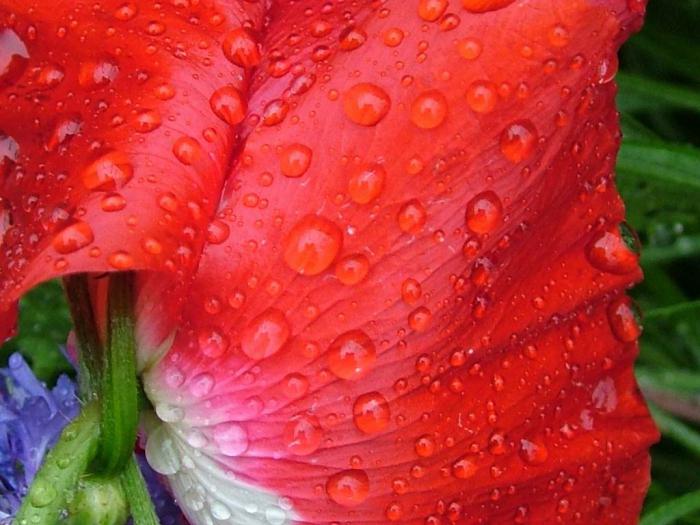

Poppy flower: value, description
Many gardeners and gardeners associate these flowers with drugs. In fact, it's not quite like that.
It is forbidden to grow the flower poppy sleeping, or opium. Its height is about one meter, the flowers are large (10-12 cm in diameter), white, pink, orange, red, purple, with a black-blue spot at the base.
The seeds of such poppies are edible. The seed capsules are used to produce morphine and opium. In addition, there are many different ornamental species of poppies that do not have drug properties. They are all divided into three groups: perennials, annuals and biennials.
Poppy (flower): description
The plant is from the poppy family. The entire genus has more than 100 species. From the Latin name is translated into Russian as "milk". Why? The reason is that on a cut of the flower stalk a white sap, similar to milk, is released.
The bush of the plant usually has a height reaching almost 90 cm, sometimes there are also small, dwarf forms. It has a stiff, hairy stem. The leaves are pinnate, dissected.
The large flowers are solitary, among which there are both simple and terry types. Poppies bloom in June, after which the flower stems die off and then the leaves and stem fall off.
Perennial poppies are found in Asia, Europe and Australia.
Choosing a Planting Site and Care
Poppy flower likes a place well lit, but slightly shaded areas are also not contraindicated for it. The soil is suitable ordinary garden soil, but well-drained. Rich in minerals and nutritious will be even more to the liking of the flowers. Poppies are unpretentious, frost-resistant, normally tolerate periods of drought.
After the end of flowering time, when the leaves are already beginning to turn yellow, the above-ground part should be cut off. In this case, somewhere from the middle of August the leaves begin to grow again. With a warm autumn, the plant can bloom again. And under the snow, the leaves may go green. In April, they begin to bloom again.
Perennial poppies can be planted alone or in mixed groups (in rockeries). Both flowers and capsules are widely used in cuttings. Pods, for example, are good material for original dry winter bouquets.
Propagation
The poppy flower is usually propagated by seeds. Sowing can be done both in the spring and in the winter, and in the open ground. It is desirable to plant immediately in a permanent place of growth. If necessary, the seedlings can be thinned.
The roots of adult plants are quite long, so it is difficult to transplant them, since damage to the root system is possible.
Oriental poppy can also be propagated by division, since it has root shoots. However, such a procedure should be carried out in the summer immediately after flowering, during dormancy.
The most common garden flowers are poppies. Types
In floriculture, the most widely used and widespread are the oriental poppy and bractal poppy. They are the brightest and most beautiful.
The homeland of the oriental poppy (P. orientale) is the Caucasus. This perennial has thick upright stems. Their height is up to 100 cm.
Its leaves are peristhodically dissected, rosette-shaped, dark green in color (up to 30 cm long). Both stems, leaves, and buds are pubescent and shaggy.
Large bright red flowers can be up to 14 cm in diameter. At the very base of the petals is a black square spot.
A species of bractate poppy (P. bracteatum) is also native to the Caucasus. It reaches a height of 140 cm. The stem is erect, the flowers are bright, crimson-red (diameter 16 cm).
And at the very base of the petals is an elongated black spot. Blossoms quite abundantly, beginning in late May and ending in early June.
Different varieties of this species differ in the height of the bush, color and size of the flowers. Both species are flowers (poppies) perennial.
Perennial flowers: care
Perennials are three species: alpine, oriental and holostebelny. The most widespread among gardeners, as already noted above, were varieties of the eastern species.
Perennial poppies do not require covering for the winter, are light-loving, winter-hardy, and tolerate drought well. There is a slight whim - stagnant water is undesirable.
Poppy flower is very responsive to organic and mineral fertilizers.
This species can be propagated vegetatively, carefully separating the lateral rosettes in spring or autumn. Without replanting, poppies grow for about 7 years.
Flowers look great in a group with other plants (among daisies, bluebells, etc.). Dwarf varieties are great for today's fashionable alpine slopes.
Annuals
If you have annual poppies on the plot, how are they cared for? They include samoseyka. These poppies come in simple and terry. Their colors range from white to red, there are also white with a border on the edges of the petals. The garden poppy is also nice and interesting. Its flowers (in its terry varieties) resemble peonies.
The annual poppies can be sown in early spring, after the snow has melted. They give abundant self-seeding, so you only need to sow them once.
Bouquets with poppies are a great decoration for any room, but there is one drawback: they do not last long after they are cut.
There is a little secret that prolongs the life of flowers. They should be cut in the morning, and only the buds which have burst. Then the place of the cut should be held over a fire for a few seconds, and then immediately put in water. Add a few crystals of manganese. The bouquet will last longer.
Source: pr-perevod.ru
Tattoo with a scarlet flower
The fact that flowers depicted on the body have great meaning, everyone knows. What does the red poppy mean in this case? A tattoo with this flower has always been associated with death or sleep. And these two concepts are too close to each other, for example, lethargic sleep often duplicates the state of death, so it is difficult to distinguish them. This is all very strange, and people have been thinking about solving the mystery for decades.
Another meaning of such a drawing on the body is truth, loyalty, faithfulness. Deciding to decorate your body with poppies, think about whether it's worth it. Whatever meaning you put in the drawing yourself, there will always remain some mysteries and meanings unknown to us.
Variants, styles, compositions
From nature, the plant has been given graceful forms. A lush large head sits on a rough stem, surrounded by elongated dark green leaves. The shape of the flower is malleable, laid out in patterns or knots. Elongated lines are interspersed with rounded figures.
Depending on the composition, the meaning of the pattern is strengthened. For example, bowed heads and braided cross stems denote sleep and death. Stretched upward plants with their heads open - the triumph of life, joy.
Styles suitable for the flower are:
- watercolor;
- realism;
- graphics;
- abstraction;
- chicano;
- black and white;
- engraving;
- old skool.
The thin stem of the flower can be used as lines to create an inscription. The red bud is often portrayed with blood streaks. This enhances the tragedy of the intended meaning. The poppy combines with the symbols of the butterfly, triangle, cross, heart rhythm.
Tips for sketches
The sketch for the future can be selected from a photo of the plant. A large number of varieties with a bright and original appearance will be good helpers to the tattoo master. Choosing the location and style you can easily compose a drawing. Hints of the master will help to achieve the best results.
Poppies are recommended to be printed in color. The flower will look festive even after many years. To keep the image in the same shape you will need minimum effort and correction every 5-6 years.
For your tattoo to best reflect your personality, think about the composition. For girls, wreaths of poppy heads intertwined with other flowers will work. Single flowers are suitable for localized tattoos in the chest, collarbone, shoulder blade or abdominal area.
For light skin, it is better to select images in watercolor style. To fit in organically, the colors should be as transparent as possible. Owners of dark skin tones can not be shy in color solutions. Combinations of black and white drawings with bright poppy heads look original.
It is recommended to avoid filling the background with blue. An exception would be drawings in the style of realism, where the background is not homogeneous. Faded solid blue fills look cheap and unprofessional against the background of scarlet petals of the flower.
On what part of the body is better to do a poppy tattoo?
Tattoo poppies look favorably on the hand. Lush soft heads are easy to arrange in a ring around the wrist, depicting a bracelet. They successfully fit into the structure of the forearm in a vertical line. Poppies look favorably in compositions on the shoulder.
A place on the back is suitable for a beautiful and full-length panel. A poppy tattoo will adorn the scapula or lie along the spine line. It is not uncommon to use poppy heads with boxes to create a floral ornament on the lower back of girls.
Men prefer to beat poppies on the chest, shin or side line. The heads are placed on the ribs, lowering the slender stems to the waist. The graceful poppy is suitable for compositions fluffed along the oblique lines of the body. For this reason, it is often stuffed in the abdominal area. And the tattoo can be found in both men and girls.
Minimalist designs with poppy heads are used to create compositions with fonts. They are printed along the line of the foot or wrist. The pattern has rich potential, as red poppies are combined with almost any object or image.
Recommended reading: Pentagram tattoo

